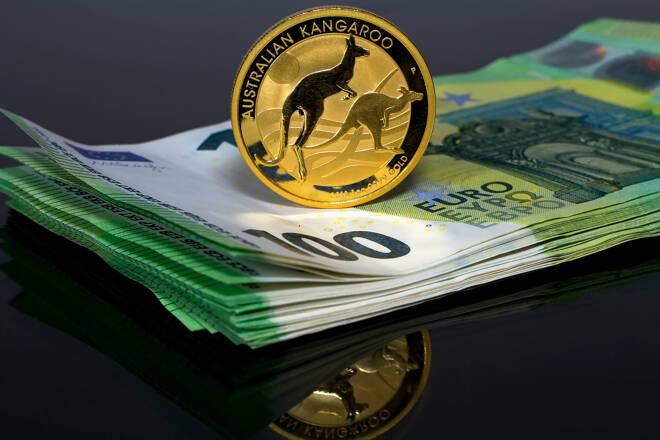Advertisement
Advertisement
AUD to USD Forecast: China PMIs and the US Personal Income and Outlays Report
By:
Key Points:
- Australian private sector credit figures for April will put the Aussie dollar in focus.
- NBS Manufacturing and Non-Manufacturing PMI numbers from China also need consideration during the Asian session.
- Later in the session, the US Personal Income and Outlays Report and FOMC member chatter will influence buyer appetite for the AUD/USD.
Private Sector Credit and Chinese Private Sector PMIs
On Friday (May 31), Australian private sector credit numbers may impact buyer demand for the AUD/USD. Weaker demand for credit may affect disposable income and consumer spending. Downward trends in consumer spending could dampen demand-driven inflation and refuel expectations of a 2024 RBA rate cut.
Economists forecast private sector credit to increase by 0.4% in April after rising by 0.3% in March. Furthermore, economists predict housing credit to advance by 0.4% after an increase of 0.4% in March.
While the Aussie numbers will draw investor interest, private sector PMI numbers from China may impact the AUD/USD more.
Economists forecast the NBS Manufacturing PMI to increase from 50.4 to 50.5 in May. Additionally, economists expect the NBS Non-Manufacturing PMI to rise from 51.2 to 51.5.
Better-than-expected figures would signal a pickup in economic activity. Increased demand from China could boost the Australian economy and the Aussie dollar. Australia has a trade-to-GDP ratio above 50%, with 20% of the workforce in trade-related jobs.
Improved Australian trade terms with China may lead to a more upbeat outlook for the Australian economy. In the recent RBA projections, RBA staff considered concerns about the Chinese economy in the Australian growth forecasts.
US Economic Calendar: Inflation, Fed Speakers, and the Fed Rate Path
Later in the Friday session, the US Personal Income and Outlays Report will impact buyer demand for the US dollar.
Sticky inflation numbers and upward personal income and spending trends may sink investor bets on a September Fed rate cut.
Economists forecast the Core PCE Price Index to increase 2.8% year-on-year in April after advancing 2.8% in March. Additionally, economists expect personal income and spending to rise by 0.3% in April. Personal income rose by 0.5% in March, with spending up by 0.8%.
A higher-for-longer Fed rate path could raise borrowing costs and reduce disposable income. Downward trends in disposable income could affect consumer spending and dampen demand-driven inflationary pressures.
Moreover, investors should track FOMC member reactions to the US Personal Income and Outlays Report.
Short-Term Forecast
Near-term AUD/USD trends will likely hinge on the PMI numbers from China and the US Personal Income and Outlays Report. Better-than-expected numbers from China could boost buyer demand for the Aussie dollar. However, a hotter-than-expected US Report could sink investor bets on a September Fed rate hike and the AUD/USD.
AUD/USD Price Action
Daily Chart
The AUD/USD hovered above the 50-day and 200-day EMAs, sending bullish price signals.
An Aussie dollar return to the $0.66500 handle could give the bulls a run at the $0.67003 resistance level. A break above the $0.67003 resistance level would support a move toward the $0.67500 handle.
China PMI numbers and the US Personal Income and Outlays Report need consideration.
Conversely, an AUD/USD break below the 50-day EMA could bring the 200-day EMA and the $0.65760 support level into play. Buying pressure could intensify at the $0.65760 support level. The 200-day EMA is confluence with the support level.
With a 14-period Daily RSI reading of 53.59, the AUD/USD could climb to the $0.67500 handle before entering overbought territory.
About the Author
Bob Masonauthor
With over 28 years of experience in the financial industry, Bob has worked with various global rating agencies and multinational banks. Currently he is covering currencies, commodities, alternative asset classes and global equities, focusing mostly on European and Asian markets.
Advertisement
